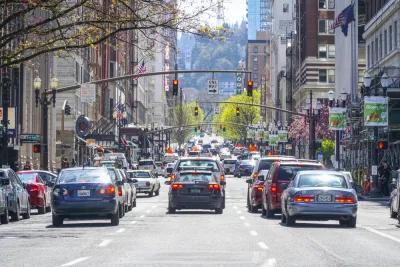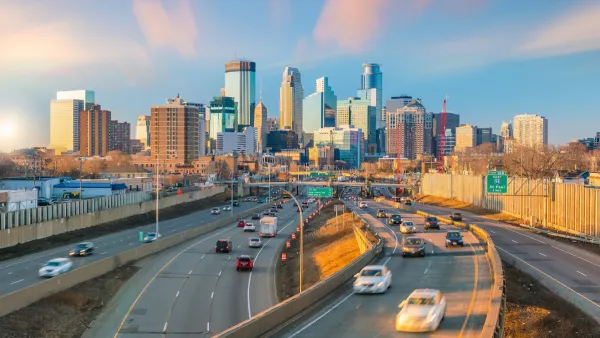The pandemic let many people experience a commute-free lifestyle, but can we reduce rush-hour traffic as we make our return to physical workplaces?

"Every recent survey reports that the rush-hour commute is, to most of the drivers who endure it, the most difficult and unpleasant part of their day," writes Alan Ehrenhalt. "It is also the most alienating." Yet "[i]t shouldn’t be forgotten that the solo commute is a creation of the 20th century. In Victorian times, work and home life were concentrated in the same places." In fact, "[t]he nightmares of rush hour were and are creatures of the automobile, the modern suburb and the zoning ordinances that have rigidly separated commercial and industrial enclaves from the residential districts of metro areas."
During the pandemic, travel patterns shifted significantly. "Drivers, especially those working at home, have been spacing out their travel much more evenly over the course of the day," flattening the rush hour traffic peaks. "Is there a way we can buck the historical trend of eventual return to congestion and keep something like the current arrangement going?"
In lieu of a scenario where a significant percentage of workers keep working from home(a possibility that carries its own rippling implications), Ehrenhalt argues that a simple solution to the commute problem "would be to bring most remote workers back to the center city but to stagger their hours, as has been happening to a limited extent already." Our "nightmare rush hours" are a result of "inefficient management practices — we could wake up from the nightmare with a commitment to sensible scheduling."
Of course, writes Ehrenhalt, "the most appealing long-term answer is for more of us to live near the places where we work," reducing the need for extensive travel to and from work. The commuting problem can only be solved by eliminating the need for it for more people.
FULL STORY: Is There an Exit Ramp from the Rush-Hour Nightmare?

National Parks Layoffs Will Cause Communities to Lose Billions
Thousands of essential park workers were laid off this week, just before the busy spring break season.

Retro-silient?: America’s First “Eco-burb,” The Woodlands Turns 50
A master-planned community north of Houston offers lessons on green infrastructure and resilient design, but falls short of its founder’s lofty affordability and walkability goals.

Delivering for America Plan Will Downgrade Mail Service in at Least 49.5 Percent of Zip Codes
Republican and Democrat lawmakers criticize the plan for its disproportionate negative impact on rural communities.

Test News Post 1
This is a summary

Test News Headline 46
Test for the image on the front page.

Balancing Bombs and Butterflies: How the National Guard Protects a Rare Species
The National Guard at Fort Indiantown Gap uses GIS technology and land management strategies to balance military training with conservation efforts, ensuring the survival of the rare eastern regal fritillary butterfly.
Urban Design for Planners 1: Software Tools
This six-course series explores essential urban design concepts using open source software and equips planners with the tools they need to participate fully in the urban design process.
Planning for Universal Design
Learn the tools for implementing Universal Design in planning regulations.
EMC Planning Group, Inc.
Planetizen
Planetizen
Mpact (formerly Rail~Volution)
Great Falls Development Authority, Inc.
HUDs Office of Policy Development and Research
NYU Wagner Graduate School of Public Service





























